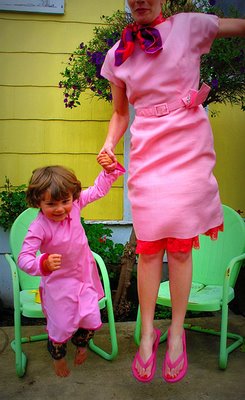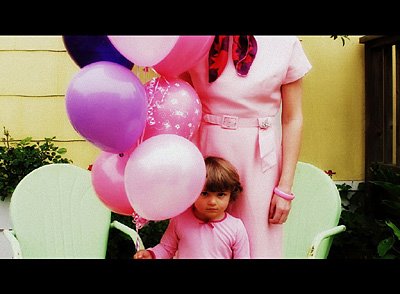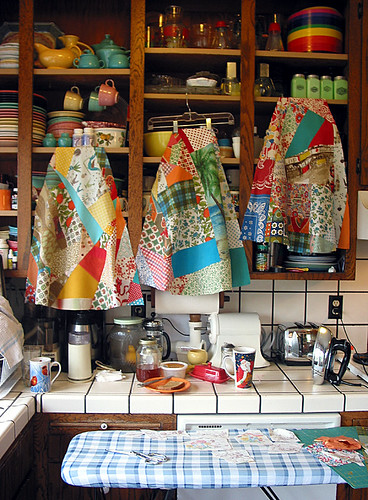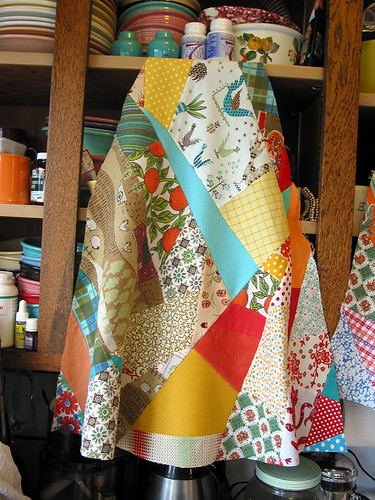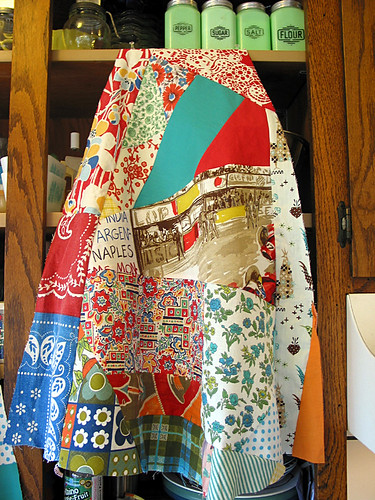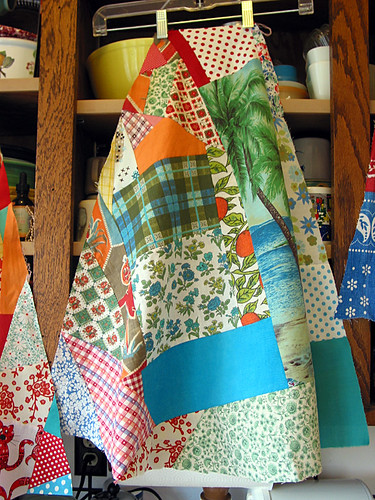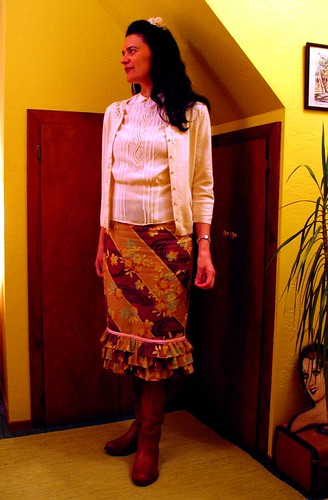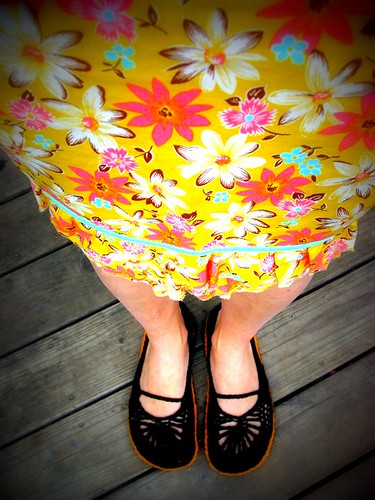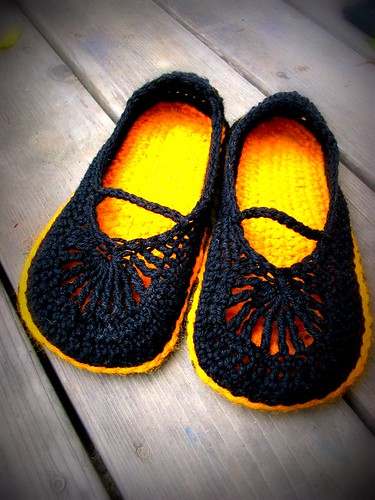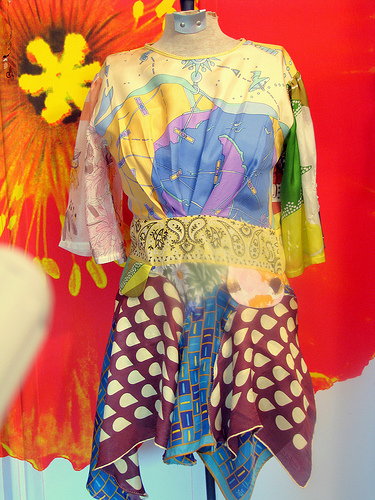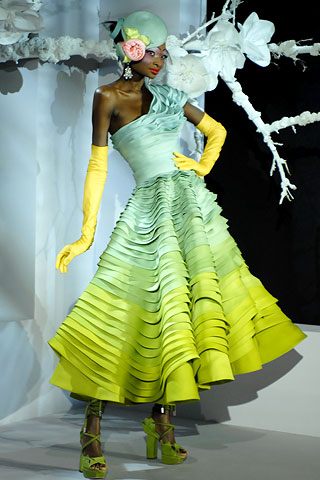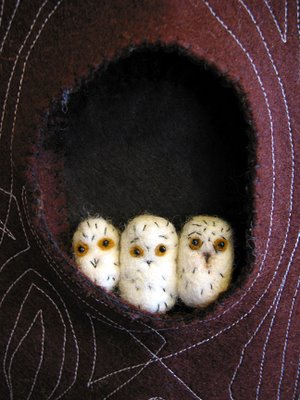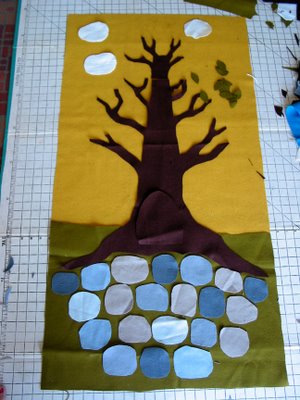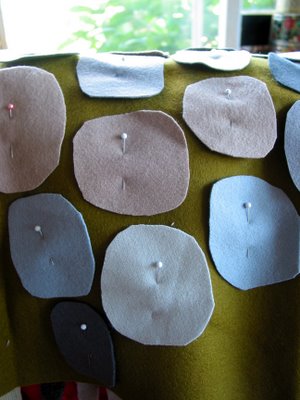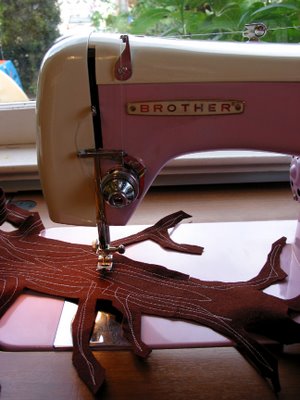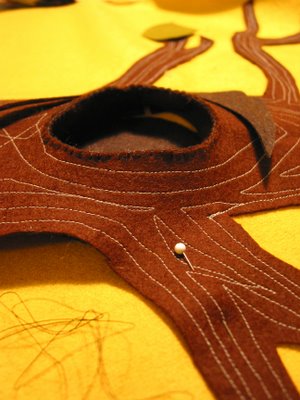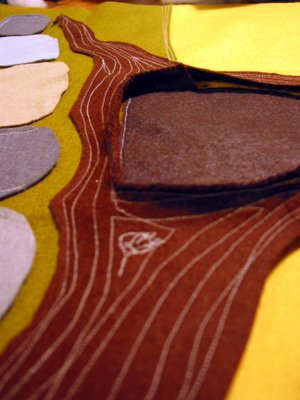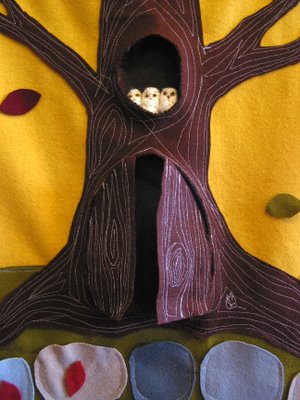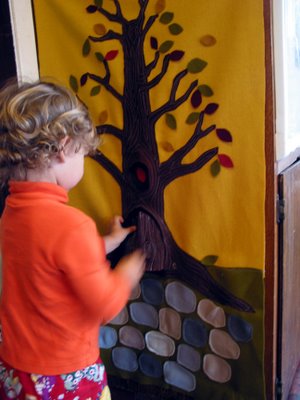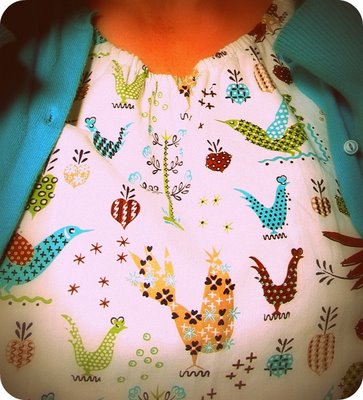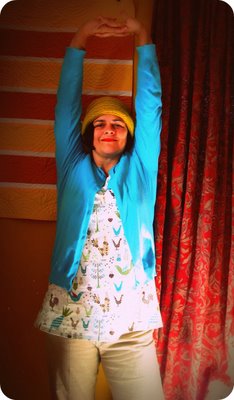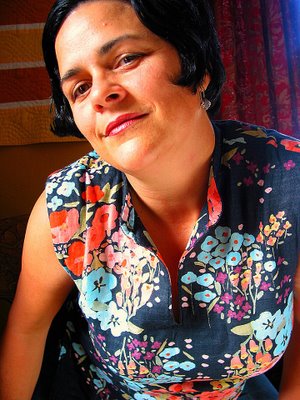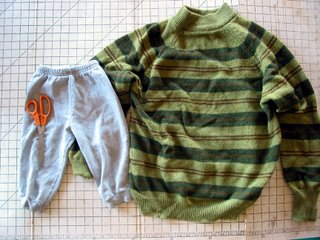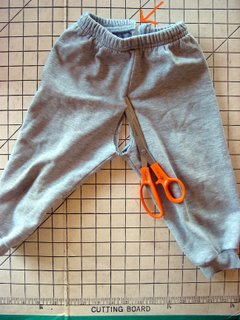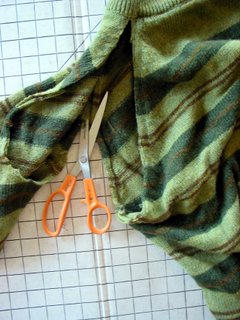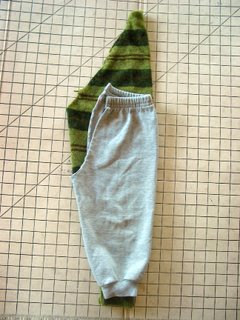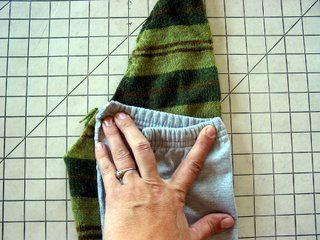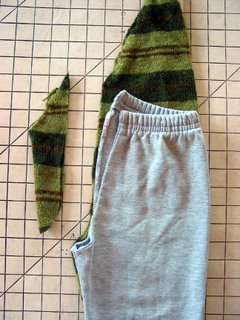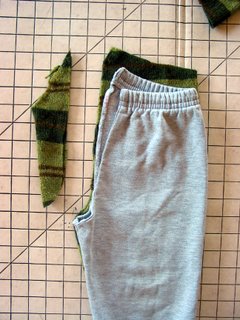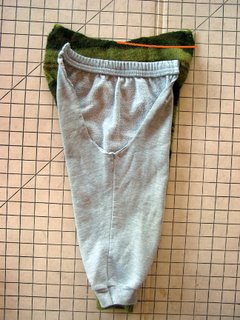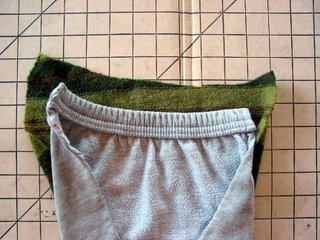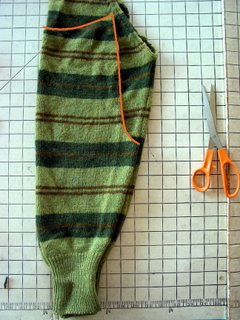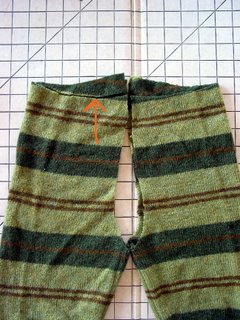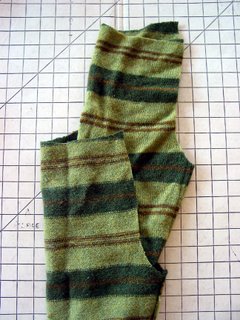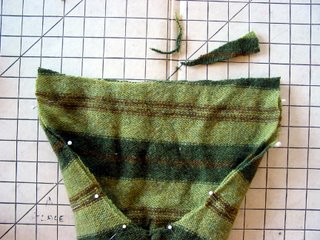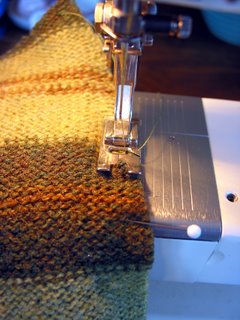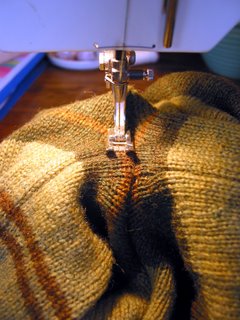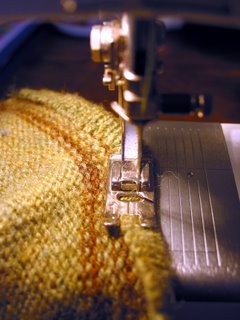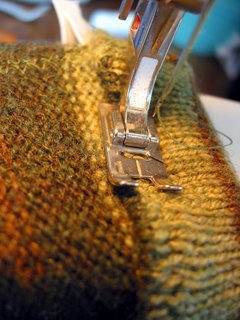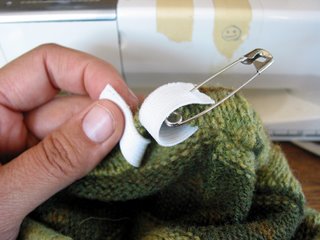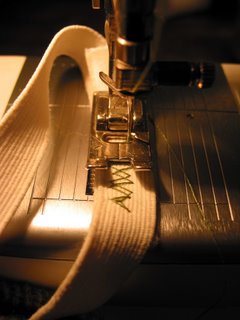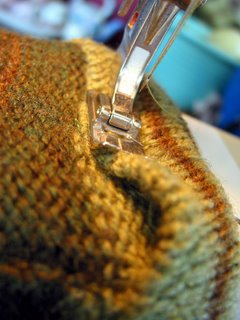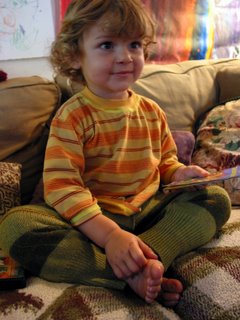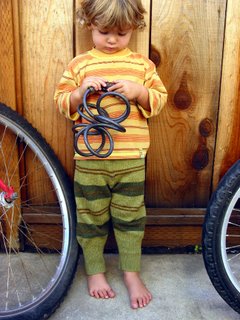[I'm doing a little blog organizing and finally posting this zipper tutorial that I wrote up for Sew, Mama, Sew! last year. Enjoy!]
The Pep TalkLearning to install a zipper changed my life.Sewing for myself gives me control of what my clothing looks like and how it fits - how empowering is that! I'm so in love with the process and result of garment making that I've been averaging about two pieces a week. I can make a skirt in a couple of hours! It all started with the book
Sew What! Skirts, which was written and packaged in such a way as to tempt me to overcome my fear of the zipper foot.
Around the same time I read a
blog post by a woman who had gained ten pounds over the holidays and had made herself a cute new skirt to fit her increased size. This concept rearranged my thinking. No longer was I going to wait to lose weight in order to reward myself with new clothes. I was going to draft a skirt pattern (learned from
Sew What! Skirts) to fit my body as-is; choose a fabric that I love; and sew myself some tailored clothes. Custom-fitted clothing looks and feels better than off-the-rack, especially if your body shape doesn't fit the industry standards.
The ruffler foot is not the zipper foot.I was afraid of sewing in a zipper for about 30 years because I thought my mom's
ruffler foot was a zipper foot. A zipper foot is actually just a simple little foot that looks like half of a foot. One side is missing so that you can get close to the zipper teeth without bumping into them. My zipper foot (#4 Bernina) has two positions, left and right, so that you can sew up either side of the zipper. The zipper foot is not complicated and should not scare you away. The lesson here: get to know your sewing attachments, they are your friends. Be sure to read up on your own model of zipper foot.
Don't hate me because I'm a beautiful zipper.The most difficult part of zipper installation is making it look good. With the glue-set method you eliminate most of the challenges. The process becomes quite easy. The idea behind the glue-set zipper installation is to use adhesive to hold the zipper in place, while sewing, instead of pins. This allows you to top stitch the zipper without having to wrangle with the pins. And, since you are top stitching it into place, you have more control on how it looks on the outside, thus, more chances at zipper success.
The Glue-Set Zipper Tutorial: A basic side zipper for an A-line skirtStep 1: Rough Zipper Layout

With the front and back panels of the skirt right sides together, lay a zipper on the side seam about 1/4 inch down from the stay stitching to get an idea of where the bottom of the zipper will be. A zipper between seven and nine inches is considered normal for skirts. The shorter the zipper is the harder it will be to get over hips. Got a big back side? Use a longer zipper.
-----------------------------------------
Step 2: Mark Zipper Bottom

Place two pins at the bottom of where the zipper will end. You want these to be about where the zipper teeth end, not where the zipper fabric ends. The goal is to get as close to the zipper as possible without running your sewing machine needle into the zipper teeth or bottom closure. Continue to pin the two skirt pieces together in preparation for sewing.
-----------------------------------------
Step 3: Sew and Baste Zipper Side Seam

Starting at the bottom of the skirt, sew with a regular stitch up to the two pins that mark the bottom of where the zipper will go. At this point back tack a little for reinforcement. Continue to the top of the skirt waist with a basting stitch. These stitches will be ripped out after the zipper is installed. Press the seam flat with an iron.
-----------------------------------------
Step 4: Glue Zipper

With a regular glue stick apply glue to the right side of the zipper avoiding the zipper teeth. I have read that there are sewing adhesives, but have not tried any yet. The glue stick seems to work fine.
-----------------------------------------
Step 5: Rough Zipper Placement

Gently place the glued side of the zipper onto the pressed side seam about 1/4 inch from the stay stitching. This isn't the final placement so do not press it into the fabric.
-----------------------------------------
Step 6: Final Zipper Placement

Starting at the top of the zipper, roll the zipper into place doing your best to center the teeth along the line of the seam.
-----------------------------------------
Step 7: Set Glue

When you are happy with the placement and alignment of your zipper set the glue by pressing with an iron. Make sure it's not too hot.
-----------------------------------------
Step 8: Top Stitching (part 1)

On the right side of the fabric, with zipper foot set to the outside position, sew across the bottom of the zipper. You'll be starting at one corner and sewing across the seam to the other corner of the bottom of the zipper. Stop at this corner, leaving the needle in the fabric. Make sure that you don't hit the bottom closure of the zipper.
-----------------------------------------
Step 9: Top Stitching (part 2)

At the corner of the bottom of the zipper leave the needle in the fabric and lift foot to turn the fabric for the ascent back to the waist. You want the distance from the seam to the stitching to be as far away from the seam as you can go without running off of the zipper fabric. This is one of the challenges of the zipper. If you are too close to the zipper teeth it's harder to make a neat looking stitch. If you get to far away, your stitching falls off of the zipper, which looks bad and messes with functionality. This photo shows the distance that I normally use, I think it's about 3/8 inch from the seam. Make sure to leave the threads long enough to work in when finished.
-----------------------------------------
Step 10: Zipper Pull Work-Around (part 1)

One of the problems with putting in zippers is sewing around the bulk of the zipper pull. It tends to make for wonky stitching up at the top, with the stitching taking on a Y-shape as you sew around the pull. One way to fix this is to make the top stitch far enough away that the pull doesn't affect the stitch. Another trick is to stop short of the pull; leave the needle in the fabric; and pull the zipper down a bit, so it's behind the zipper foot.
-----------------------------------------
Step 11: Zipper Pull Work-Around (part 2)

With needle still in the fabric and the foot up the zipper is opened to move the zipper pull behind zipper foot. Put foot down and continue sewing to the top of the skirt.
-----------------------------------------
Step 12: Move Zipper Foot

Switch zipper foot to right side of the needle.
-----------------------------------------
Step 13: Top Stitch Other Side

Starting in the bottom corner of the top-stitching, place needle in fabric. Lower zipper foot and stitch along the bottom of the zipper following the previous stitches. At the corner leave the needle in the fabric. Lift foot, rotate fabric, put foot down, and top stitch up other side of zipper as before.
-----------------------------------------
Step 14: Check Zipper

After top stitching is done check the underside of the zipper to make sure that you have sewn all away around the zipper without running off of the zipper fabric. I moved the zipper pull up and down according to where I was sewing in order to avoid sewing around it.
-----------------------------------------
Step 15: Rip Out Basting

If you are happy with your top-stitching you are now done with the hard part. If the top stitching looks funky, or the stitches didn't catch the zipper, then you should probably rip out the stitches with a seam ripper and sew it again. This sounds difficult, but it's really not that hard. Once you are satisfied with your work, you get to do the fun part: ripping out the basting to reveal the zipper.
-----------------------------------------
Step 16: Pull Out Threads

Because it's so fun to rip out the basting I took another picture. Don't forget to pull out the little bits of basting thread.
-----------------------------------------
Step 17: Sew in Ends

You should now have a working zipper. If a little glue has gunked up the zipper teeth, just wash it off with a damp rag. The last step in the zipper installation is to work in the threads at the bottom of the zipper. Use a regular hand sewing needle to run the threads to the inside of the skirt, tie off, and clip excess.
-----------------------------------------

This is what my finished skirt looks like. When Kristin asked me to do a tutorial for Skirt Month I immediately thought of the glue-set zipper. As I planned the skirt and the tutorial I realized that I wasn't sure which step to start the zipper tutorial with. I ended up making a start-to-finish photographic tutorial of how I sew an A-line skirt with glue-set zipper. Since it took 47 photos to document the process I'm paring this post down to the zipper-only tutorial — a mere 18 photos. The rest of the skirt tutorial can be found in
this Flickr set.
Good luck and happy sewing.
— Michelle
Labels: clothes, sewing, tutorial

